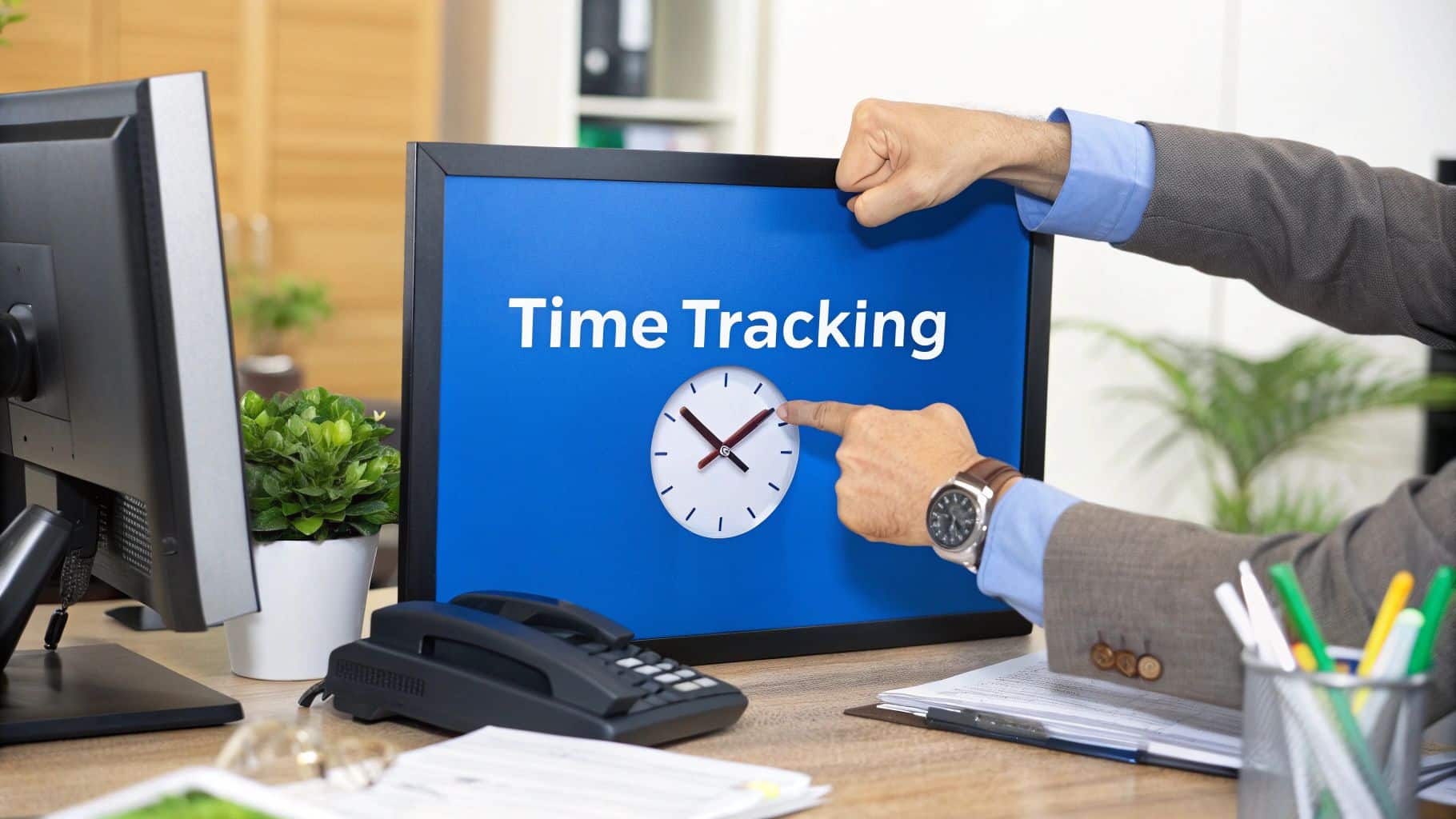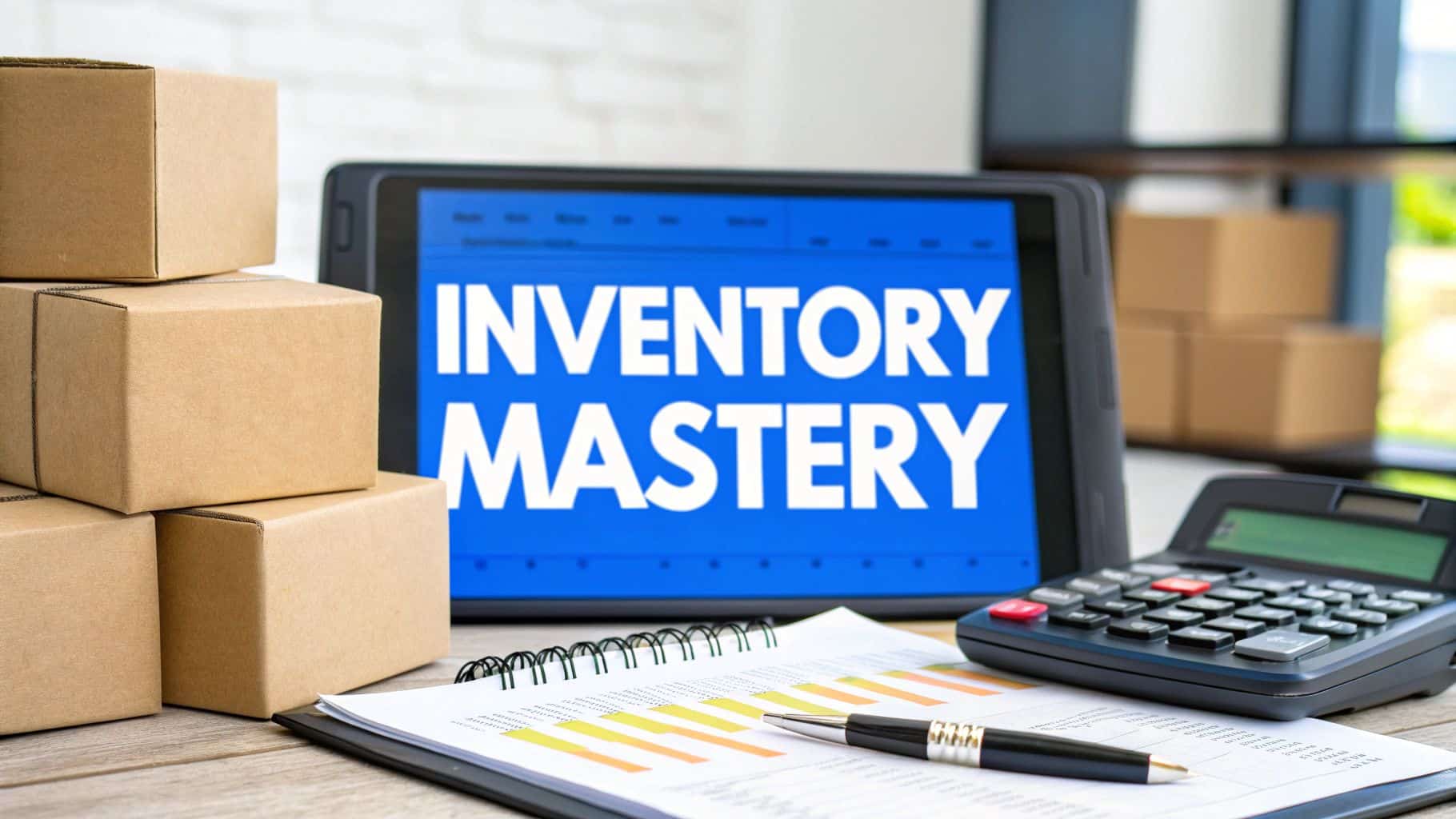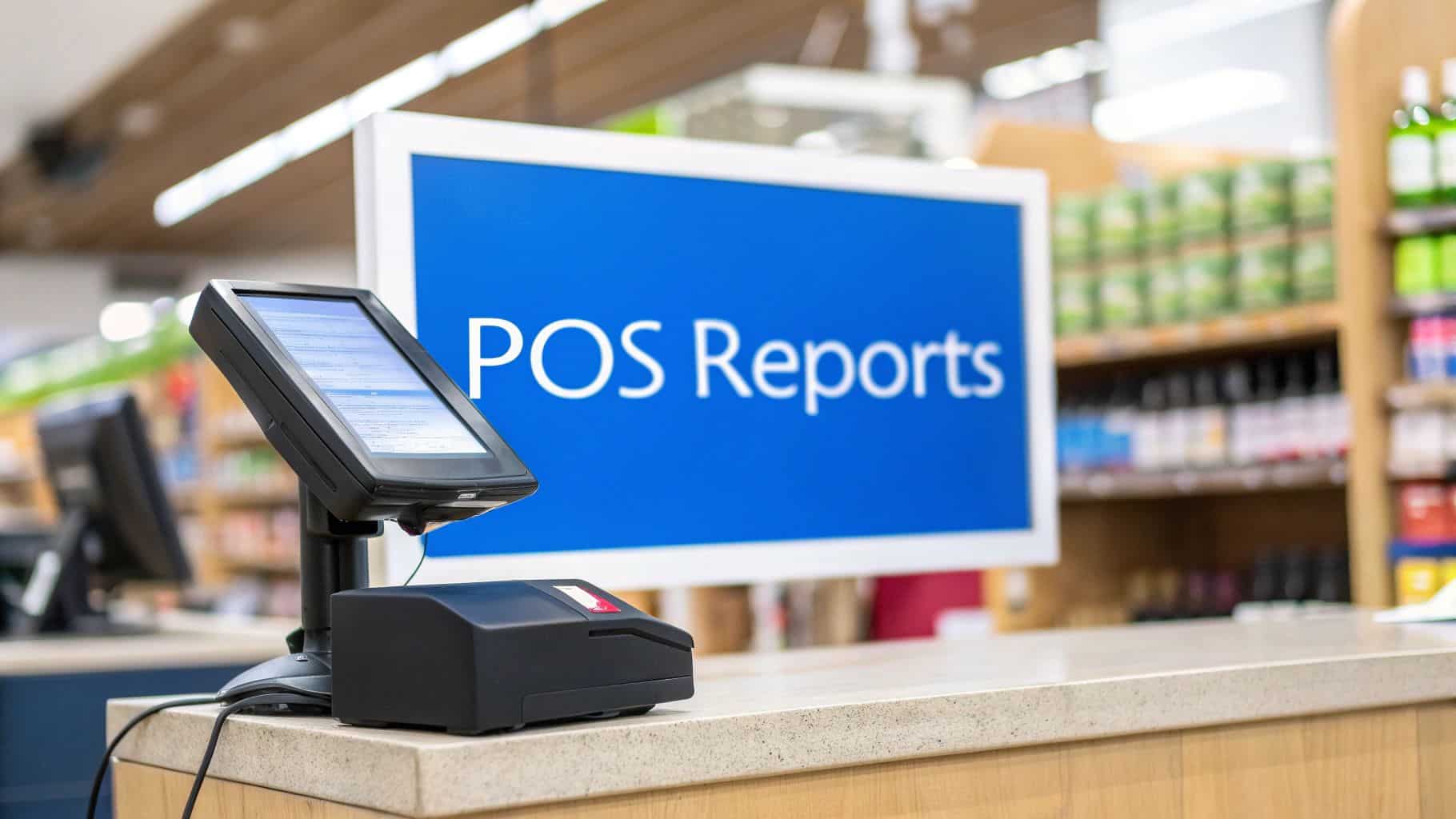Running a small grocery store successfully depends heavily on efficient inventory management. Without the right system in place, it’s easy to lose track of stock, face unnecessary waste, or miss sales opportunities. Effective inventory management for a small grocery store ensures that shelves stay stocked, customers find what they need, and business owners maintain profitability. By combining technology, processes, and planning, small grocers can optimize their inventory to match demand, reduce shrinkage, and boost overall efficiency.
Table of Contents
- The Importance of Inventory Management for Grocery Stores
- Using Technology to Simplify Stock Tracking
- Best Practices for Inventory Optimization
- Demand Forecasting and Replenishment Planning
- Conducting Inventory Audits and Reporting
- Why Biyo POS is the Right Choice for Grocery Stores
- FAQ
The Importance of Inventory Management for Grocery Stores
Small grocery stores operate with tight margins and high competition. Proper inventory management ensures that fresh products are available when customers need them and reduces the risks of expired items sitting on shelves. By tracking stock levels closely, store owners can maintain balance between supply and demand while minimizing losses from overstocking or understocking.
Improving Customer Satisfaction Through Stock Availability
When customers enter a store, they expect to find the products they need on the shelves. Missing items often lead to frustration, and repeated stockouts can cause shoppers to switch to competitors. An effective inventory management for a small grocery store strategy allows businesses to track sales trends and maintain popular products in stock. As a result, customers trust the store to meet their needs consistently.
For instance, keeping a record of fast-moving items like milk, bread, and eggs helps ensure these essentials are always replenished in time. By setting up low stock alerts, the store can proactively reorder products before they run out. This approach not only keeps customers happy but also boosts sales over time.
Furthermore, satisfied customers are more likely to recommend the store to friends and family. Positive word-of-mouth creates repeat business and increases loyalty, which is critical for small retailers operating in competitive local markets.
Beyond meeting expectations, grocery owners can take customer satisfaction further by categorizing products effectively. Grouping similar items together makes it easier for customers to locate them, which enhances the overall shopping experience and encourages additional purchases.
Reducing Waste and Controlling Shrinkage
One of the biggest challenges in grocery retail is product waste, especially when dealing with perishable goods. Shrinkage—losses due to theft, spoilage, or mismanagement—can eat into already thin profit margins. By implementing strong inventory management processes, small grocery store owners can reduce these losses significantly.
Expiration date tracking ensures that older products are sold first, reducing spoilage. For example, rotating dairy products so that newer shipments go to the back prevents outdated items from being left unsold. In addition, barcode scanning systems provide real-time updates on sales, which helps in identifying slow-moving items and adjusting orders accordingly.
Shrinkage control measures like employee training, supplier management, and tighter stock tracking reduce the chances of errors. When every product is accounted for, it becomes much easier to identify issues and correct them before they become major problems.
Ultimately, reducing waste through smarter inventory practices not only preserves profits but also supports sustainability. Customers appreciate businesses that avoid unnecessary food waste, making it a win-win for store owners and the community.
Ensuring Profitability and Cash Flow
Cash flow is the lifeline of small businesses. Overstocking ties up money in products that may not sell quickly, while understocking can lead to missed sales opportunities. With effective inventory management for a small grocery store, owners can balance cash flow by keeping the right products on hand without overinvesting in excess stock.
For instance, real-time inventory reporting allows owners to identify which items generate the most revenue. This information helps prioritize purchasing decisions and ensures that capital is directed toward products that sell faster. As a result, the business operates more efficiently and avoids unnecessary financial strain.
Sales reporting and inventory turnover analysis also highlight seasonal changes in demand. By planning purchases around holidays or special events, small grocery stores can maximize sales without wasting resources. This balance ultimately strengthens profitability and long-term sustainability.

Using Technology to Simplify Stock Tracking
Technology has transformed how small grocery stores manage inventory. Modern tools like barcode scanning, POS integration, and real-time updates make stock tracking more accurate and less time-consuming. These solutions not only reduce manual errors but also give store owners powerful insights into sales trends and stock performance.
Implementing Barcode Scanning Systems
Barcode scanning is one of the most effective ways to keep accurate records of stock. Each product is assigned a unique code that can be scanned during sales or stock checks. This eliminates guesswork and minimizes human error in stock tracking.
For example, when a customer buys an item, the barcode scanner instantly updates the POS system, reducing stock levels automatically. This integration ensures that records stay accurate and saves time compared to manual tracking. Over time, accurate data builds a reliable history of product performance, which is essential for better forecasting.
Barcode scanning also simplifies tasks like product categorization and batch tracking. Store staff can quickly scan products during audits or receiving shipments, making the process efficient and error-free.
For small grocery stores with limited staff, barcode systems reduce workload and improve productivity. The time saved can then be directed toward customer service or store improvement efforts.
POS Integration for Smarter Inventory Control
Point-of-sale (POS) systems that integrate with inventory software create a seamless connection between sales and stock data. Each transaction automatically updates inventory records, ensuring real-time accuracy. This makes it easier for store owners to spot low stock levels and reorder products on time.
A POS with inventory integration also supports advanced features like supplier management and purchase orders. Store owners can reorder directly from suppliers within the system, saving time and reducing the risk of mistakes. Automated low stock alerts further ensure that popular products never run out.
In addition, integrated systems generate detailed sales and inventory reports. This data highlights top-performing products, slow movers, and seasonal demand patterns, all of which guide better decision-making. Small grocery stores gain the same advantages as large chains without needing complex or expensive systems.
With a solution like Biyo POS, grocery stores can enjoy seamless POS integration that simplifies everyday operations and provides actionable insights.
Real-Time Updates for Accuracy
Real-time inventory updates prevent discrepancies and allow store owners to make quick, informed decisions. Whether a product is sold, received, or returned, the system updates stock levels instantly. This accuracy reduces confusion and prevents issues like double ordering or misplaced items.
For example, if a customer requests a product, staff can quickly check the system to confirm availability instead of manually searching shelves. This improves customer service and saves valuable time. Real-time updates also support multi-location stores, where accurate stock tracking across branches is critical.
Accurate, live data ensures that grocery store owners always know their inventory position. This visibility helps with inventory audits, stock valuation, and shrinkage control, all of which improve long-term profitability.
In today’s competitive retail environment, real-time accuracy gives small stores an edge by making operations smoother and more reliable.
Best Practices for Inventory Optimization
Optimizing inventory means striking the right balance between having enough stock to meet demand and avoiding excess that leads to waste. For small grocery stores, this requires a combination of product analysis, smart ordering, and continuous improvement strategies.
Effective Product Categorization
Organizing products into clear categories improves both customer experience and inventory tracking. For instance, separating dairy, produce, and dry goods helps staff manage stock more efficiently. It also ensures that low stock alerts are tied to specific product groups, making reordering easier.
Proper categorization supports sales reporting and demand forecasting. When items are grouped logically, patterns in consumer behavior become more visible. This makes it easier to identify which categories drive the most revenue and require more frequent replenishment.
Additionally, well-categorized products make store layouts more intuitive. Customers can find what they need faster, leading to higher satisfaction and increased impulse purchases.
For staff, product categorization simplifies training and reduces errors during restocking. Clear categories ensure everyone follows the same system, improving consistency and accuracy.
Low Stock Alerts and Replenishment Planning
Low stock alerts play a vital role in preventing stockouts. Automated systems notify store owners when inventory drops below a certain threshold, prompting timely reordering. This proactive approach helps small grocery stores maintain consistent product availability without overstocking.
Replenishment planning involves analyzing historical sales data to determine when and how much to reorder. For example, if bread sales peak every weekend, the system can suggest larger orders in advance. This ensures the store never runs out of popular items at crucial times.
When combined, low stock alerts and replenishment planning provide a safety net against both stockouts and waste. This system keeps inventory levels balanced while reducing the stress of manual monitoring.
By using POS integration and retail analytics, replenishment planning becomes even more accurate. Small grocery stores can take advantage of the same strategies that large retailers use without the complexity or high cost.
Controlling Shrinkage and Expiration Dates
Controlling shrinkage and monitoring expiration dates protect profits. With perishable products, even a small mistake can lead to significant losses. Expiration date tracking systems ensure that items are rotated properly, with older stock sold first.
For instance, dairy and meat products can be tagged with batch tracking labels. This makes it easy to identify which items need to be sold quickly. Store staff can then prioritize these products by placing them at the front of shelves or running promotions to move them faster.
Shrinkage control also involves monitoring theft and administrative errors. By conducting regular stock checks and comparing them with sales reports, discrepancies can be identified early. This prevents small mistakes from becoming ongoing losses.
When expiration tracking and shrinkage control are combined, grocery stores can protect margins and improve operational efficiency.
Demand Forecasting and Replenishment Planning
Accurate forecasting ensures that small grocery stores keep the right stock in the right quantities at the right time. By analyzing sales history and market trends, owners can anticipate demand changes and adjust purchasing accordingly.
Using Sales Reporting for Smarter Decisions
Sales reporting provides valuable insights into customer preferences. By identifying best-selling products and slow movers, small grocery stores can adjust their purchasing strategies to match demand. For example, if organic vegetables consistently sell out, the store can increase orders to meet customer expectations.
Regular analysis of sales data also highlights seasonal patterns. Grocery stores can stock up on holiday-related items in advance while reducing orders for items that experience slower sales during certain months.
Smarter decisions based on sales reporting lead to better profitability and improved customer satisfaction. They also reduce waste and free up capital that would otherwise be tied up in unsold inventory.
Integrating sales reports into inventory management systems allows store owners to act quickly and adjust stock levels dynamically. This adaptability keeps the store competitive in a rapidly changing retail landscape.
Forecasting with Retail Analytics
Retail analytics tools transform raw sales data into actionable insights. These tools highlight demand trends, customer buying habits, and inventory turnover rates. With this information, grocery stores can make more accurate forecasts and avoid costly mistakes.
For instance, predictive analytics may show that snack sales rise in summer months. With this knowledge, store owners can increase orders ahead of time and run promotions to boost sales even further. On the other hand, low-performing products can be scaled back to free up space and capital.
Retail analytics also support long-term growth strategies. By understanding customer demand at a deeper level, small grocery stores can tailor their product mix and pricing strategies to maximize sales and loyalty.
With real-time updates and integrated POS systems, retail analytics become even more powerful. This allows grocery store owners to respond quickly to changing demand while minimizing risk.
Balancing Inventory Turnover and Stock Valuation
Inventory turnover measures how quickly products sell and are replaced. A healthy turnover rate ensures that products remain fresh and capital is not tied up in unsold goods. Small grocery stores need to balance turnover with profitability by stocking the right items in the right quantities.
For example, perishable goods like dairy and produce should have high turnover rates to reduce waste. In contrast, shelf-stable items like canned goods can have lower turnover without causing losses. Tracking these differences helps in planning replenishment and optimizing cash flow.
Stock valuation also plays a role in financial planning. By understanding the value of inventory on hand, grocery store owners can manage budgets more effectively and prepare for audits or financial reporting.
Balancing turnover and valuation ensures that inventory management supports both short-term sales and long-term financial health. This balance is critical for the success of small grocery businesses.
Conducting Inventory Audits and Reporting
Regular audits and detailed reporting keep inventory records accurate and trustworthy. For small grocery stores, audits identify discrepancies early, improve accountability, and ensure compliance with tax and business regulations.
Scheduling Regular Inventory Audits
Conducting audits on a consistent schedule ensures that stock records match physical inventory. Whether done weekly, monthly, or quarterly, regular audits highlight discrepancies caused by shrinkage, theft, or human error. They also keep staff accountable and focused on accuracy.
For example, a small grocery store may schedule weekly audits for high-value or fast-moving items like meat and alcohol. Less critical items may be checked monthly. This structured approach balances accuracy with efficiency.
Over time, audits help identify patterns in errors or losses. Store owners can then adjust processes or implement training to reduce recurring issues, making inventory management more effective overall.
Audits also prepare the store for unexpected inspections or compliance checks. Being audit-ready at all times improves confidence and reduces stress during official reviews.
Leveraging Inventory Reports for Insights
Inventory reports transform raw data into actionable information. These reports show stock levels, sales performance, and demand trends. By analyzing them, grocery store owners can make smarter decisions about ordering, stocking, and pricing.
For instance, a report may reveal that certain items sell well only during specific months. With this insight, owners can adjust orders to match seasonal demand, preventing waste. Reports can also show which suppliers consistently deliver late or provide poor-quality products, prompting better supplier management.
Detailed reporting supports demand forecasting, replenishment planning, and financial analysis. This makes it an essential tool for maintaining control and driving growth in small grocery stores.
With cloud-based POS systems, reports can be accessed anytime, giving store owners full visibility into operations even when they are not physically present in the store.
Ensuring Compliance with Tax and Business Requirements
Accurate inventory records are essential for compliance with local tax laws and business regulations. Inventory audits and reports provide the documentation needed to file taxes, apply for permits, or meet food safety requirements.
For example, tracking batch numbers and expiration dates ensures compliance with food safety standards. In case of recalls, stores can quickly identify affected products and remove them from shelves. This protects both customers and the store’s reputation.
Maintaining accurate stock valuation and audit trails also ensures that the business remains transparent to tax authorities. Non-compliance can result in fines or penalties, which small grocery stores cannot afford.
By prioritizing compliance, small grocery stores build trust with customers, suppliers, and regulators. This trust is essential for long-term stability and success.

Why Biyo POS is the Right Choice for Grocery Stores
Effective inventory management for a small grocery store requires the right tools. Biyo POS offers an all-in-one solution that integrates POS, inventory tracking, barcode scanning, and supplier management. With features like real-time updates, low stock alerts, and demand forecasting, Biyo POS helps small grocery stores operate like large retailers without the complexity or high costs.
Grocery store owners can also take advantage of Biyo POS’s retail analytics, batch tracking, and sales reporting tools. These features make it easier to reduce shrinkage, optimize inventory, and improve profitability. With seamless sign-up and setup, Biyo POS empowers small grocery businesses to stay competitive in today’s retail environment.
FAQ
What is the best way to manage inventory in a small grocery store?
The best way is to use an integrated POS system with inventory management features. Barcode scanning, real-time updates, and automated low stock alerts simplify tracking and reduce errors.
How can I reduce waste in my grocery store?
Implement expiration date tracking, rotate stock properly, and monitor sales data. These strategies prevent spoilage and ensure that older products are sold first.
Why is demand forecasting important for grocery stores?
Demand forecasting helps stores predict sales trends, adjust stock levels, and prepare for seasonal demand. This reduces stockouts, waste, and improves profitability.
Do I need inventory audits for my store?
Yes. Regular audits maintain accurate records, identify discrepancies, and ensure compliance with tax and food safety regulations.
How does Biyo POS help with inventory management?
Biyo POS provides real-time updates, barcode scanning, supplier management, and detailed reports. These tools make inventory management efficient and accurate for small grocery stores.




